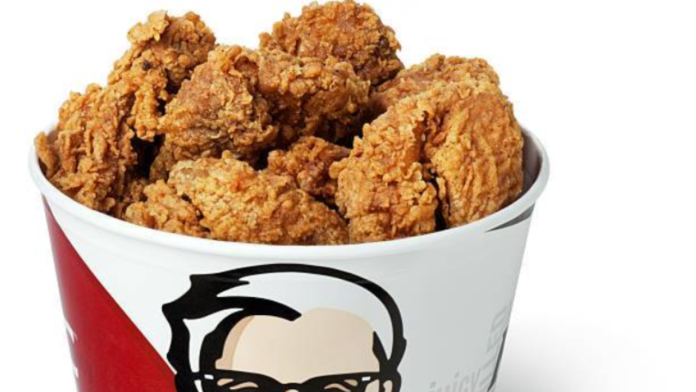The convergence of two technologies is making it possible to free up millions of hectares of agricultural land devoted to livestock. A combination of culturing cells and 3D printing of all types of meat is likely to change land use and the diet of hundreds of millions of people around the world. It could provide reliable food sources even in the face of floods, drought and other environmental catastrophes.
I’m not a Kentucky Fried Chicken (KFC) afficionado. But imagine if KFC were to produce its chicken nuggets from stem cells and 3D-printing plants. In 2020 the news wires lit up with stories of a Moscow, Russia, research laboratory under contract to the fried chicken restaurant chain to produce 3D-printed chicken nuggets.
For KFC the announcement could be seen as a public relations coup since the company is often the target of animal rights advocacy groups. KFC is truly a global enterprise, found in 145 countries at 24,000 individual locations. According to PETA, an organization focused on the ethical treatment of animals, 9 billion chickens raised on factory farms are slaughtered for their meat in the U.S. every year. A good percentage of that number go to fast-food chains like KFC.
That’s why KFC sees the growing of meat harvested from cell-cultures as a way out of the ethical dilemma. A future where the restauranteur can say “no chickens were killed here” would be a welcome mantra with other potential benefits to the global enivronment.
So how does cultured meat work?
This is cellular agriculture. Its products are called cultured meat. The source of cultured meat is animal stem cells harvested from subject hosts that are not slaughtered. Once ideal chicken, pig, sheep, cattle, etc., candidates are identified, stem cells are harvested and then using electronic, chemical and biological culturing cultivated to create vast populations of cells of various tissue types from muscle to fat.
Turning stem cells from host animals into chicken pieces, beef steaks, pork and lamb chops, and other cuts of meat requires scaffoldings of bio-absorbable materials which form a framework for 3D printers to apply these cells as “ink” to create finished cuts. Getting the balance of fat to protein to give the 3D-printed meat the same look, texture, and taste is a challenge that the technology in time can meet.
Is KFC actually serving 3D-printed chicken nuggets in any test markets presently?
The company has produced plant-based “chicken” nuggets and tried them on customers in the United States using Beyond Meats’ chicken products. But, as for 3D-printed chicken, it doesn’t appear that, as of yet, the product is ready for prime time testing. In the summer of 2020, the announcement suggested field testing would start in the fall at KFC outlets in Moscow. But my online search has uncovered nothing to support whether field trials have begun. And who knows, the COVID-19 pandemic may have temporarily stopped the development and rollout of 3D-printed chicken nuggets.
What are the benefits of using cell-cultured versus livestock-derived meat?
Besides the animal lives saved, a number of studies cite energy savings, greenhouse gas emission reductions, and redeployment of land as the prime benefits of cell-cultured meat. But some question the environmental gains stating that cultured meat could end up yielding more greenhouse gas emissions from the factories responsible for its production than current animal agricultural practices which contribute an estimated 14% of all global emissions.
Those arguing the benefits of cultured meat in a 2011 study looked at beef, sheep, pork, and poultry production and calculated the following:
- Cultured meat production would produce between 78 and 96% less greenhouse gas emissions.
- Cultured meat production would use 99% less land.
- Cultured meat production would use 82 to 96% less water.
- And cultured meat would require 7 to 45% less energy.
The study noted that of all traditional livestock agriculture practices, the raising of poultry in factory farms has the smallest environmental footprint. Having said that, cultured poultry would have a far smaller environmental impact than any current methods of producing chicken for human consumption.
What are the inhibitors to switching to cell-cultured meat?
The biggest one at present is the cost. In May 2014 I posted an article to this site that described the first lab-grown hamburger taste test. The cost to make a single hamburger patty was $325,000 U.S.
Shortly after this hamburger’s debut, a company announced its plans to develop cell-cultured meat products as an alternative to livestock-produced meat and estimated it would take it at least 5 years to get its production costs down to where consumers could afford it. That has yet to happen but no doubt, in the face of climate change concerns, and the growing worldwide demand for meat in everyday diets, that new disruptive technology will begin to displace traditional animal husbandry in agriculture within this decade. That KFC bucket you order in the future may not have harmed a single chicken
















